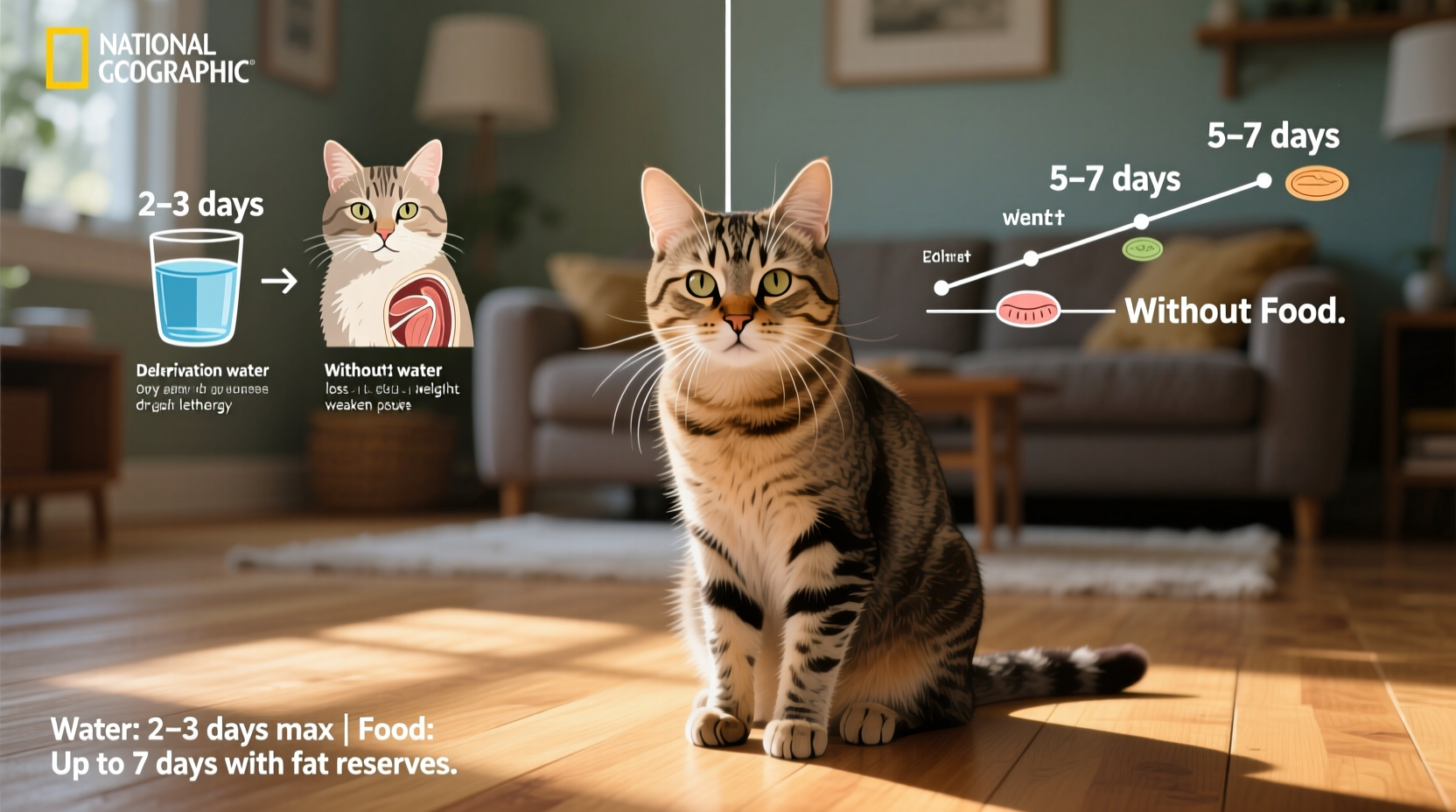Urgent Action Steps: What to Do Right Now
If your cat hasn't eaten or drunk for more than 24 hours, take immediate action. Cats develop life-threatening conditions faster than many realize. First, check for obvious issues like an empty water bowl or inaccessible food. Try offering different water sources—some cats prefer running water from a faucet or fountain. For food, try warming wet food slightly to enhance aroma, as cats rely heavily on smell when deciding to eat.
Emergency warning signs requiring immediate veterinary care:
- Lethargy or weakness lasting more than 12 hours
- Dry gums or decreased skin elasticity (signs of dehydration)
- Vomiting along with refusal to eat/drink
- Not producing urine for 24+ hours
- Difficulty breathing or unusual panting

Understanding Feline Physiology: Why Timeframes Matter
Cats have unique metabolic requirements that make them particularly vulnerable to food and water deprivation. Unlike humans or dogs, cats evolved as obligate carnivores with highly specialized digestive systems. Their livers process nutrients differently, making them susceptible to hepatic lipidosis (fatty liver disease) after just 2-3 days without adequate nutrition.
According to the American Veterinary Medical Association, cats derive most of their moisture from food—especially wet varieties containing 70-80% water. This biological adaptation means cats naturally drink less water than other animals, but also makes them more vulnerable to dehydration when not eating properly.
Symptom Progression Timeline: What Happens Hour by Hour
| Timeframe | Without Food | Without Water |
|---|---|---|
| 24 hours | Decreased energy, possible lethargy | Dry gums, decreased skin elasticity |
| 48 hours | Risk of hepatic lipidosis begins, vomiting may occur | Significant dehydration, sunken eyes, reduced urine output |
| 72 hours | Hepatic lipidosis likely developing, weakness increases | Severe dehydration, kidney stress begins |
| 96+ hours | Critical liver failure risk, requires hospitalization | Kidney damage likely, emergency situation |
When to Seek Veterinary Care: Clear Thresholds
Don't wait until the 3-4 day mark to seek help. The American Association of Feline Practitioners recommends veterinary consultation if your cat hasn't eaten for:
- 24 hours (healthy adult)
- 12 hours (kitten, senior cat, or cat with existing health conditions)
- Any time accompanied by vomiting, diarrhea, or lethargy
Veterinarians typically begin with diagnostic tests to determine the underlying cause. Treatment may include subcutaneous fluids for dehydration, appetite stimulants, or in severe cases, hospitalization with intravenous fluids and nutritional support. Early intervention dramatically improves outcomes—cats treated within 24-48 hours of stopping eating have significantly better recovery rates.
Prevention Strategies for Responsible Cat Owners
Preventing food and water deprivation issues starts with understanding your cat's normal habits. Establish baseline measurements:
- Track daily water consumption (typically 3.5-4.5 oz per 5 lbs body weight)
- Monitor food intake patterns (wet vs. dry food preferences)
- Note drinking preferences (bowl type, location, moving vs. still water)
Environmental factors significantly impact hydration. The Cornell Feline Health Center reports that cats in multi-pet households often drink less due to competition or stress. Place multiple water stations throughout your home, away from food and litter boxes. Consider adding water fountains, as many cats prefer moving water.
For finicky eaters, rotate between different protein sources and textures. Cats can develop strong food aversions after just one negative experience, so avoid forcing medication into food. If your cat skips a meal occasionally but remains active and hydrated, this may be normal—but consistent refusal to eat requires investigation.
Frequently Asked Questions
Can cats survive longer without food than water?
Yes, cats typically survive 3-4 days without food but only about 3 days without water. However, serious health complications begin after just 24-48 hours without either. Dehydration progresses faster than starvation effects, making water deprivation more immediately dangerous.
What causes cats to stop eating or drinking?
Common causes include dental pain, kidney disease, diabetes, gastrointestinal issues, stress from environmental changes, or dislike of food/water presentation. Even minor issues like a dirty water bowl or food placed near the litter box can cause refusal. Always investigate underlying medical causes with veterinary help.
How can I encourage my cat to drink more water?
Try multiple clean water sources in different locations, use ceramic or stainless steel bowls (avoid plastic), add water fountains, offer running tap water, mix water with wet food, or try flavoring water with low-sodium broth. Some cats prefer ice cubes in their water. The key is identifying your cat's specific preferences through observation.
Is hepatic lipidosis preventable if my cat stops eating?
Yes, through early intervention. If your cat hasn't eaten for 24-48 hours, veterinary care can prevent hepatic lipidosis. Treatment may include appetite stimulants, syringe feeding with prescription diets, or in severe cases, feeding tubes. The critical window for prevention is within the first 48 hours of reduced food intake.
How much water should my cat drink daily?
Cats should drink approximately 3.5-4.5 ounces of water per 5 pounds of body weight daily. Cats eating wet food (70-80% water content) need less additional water than those on dry food diets. Monitor your cat's normal intake to recognize concerning changes early.











 浙公网安备
33010002000092号
浙公网安备
33010002000092号 浙B2-20120091-4
浙B2-20120091-4